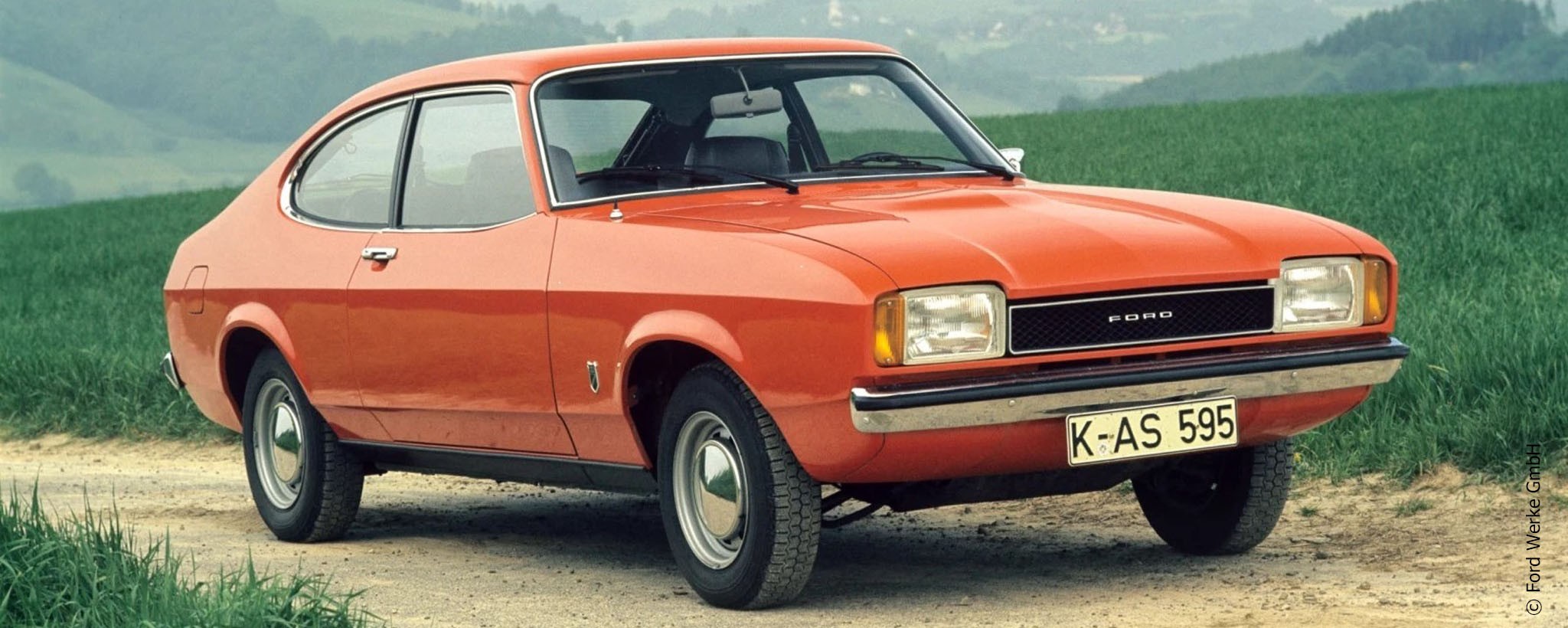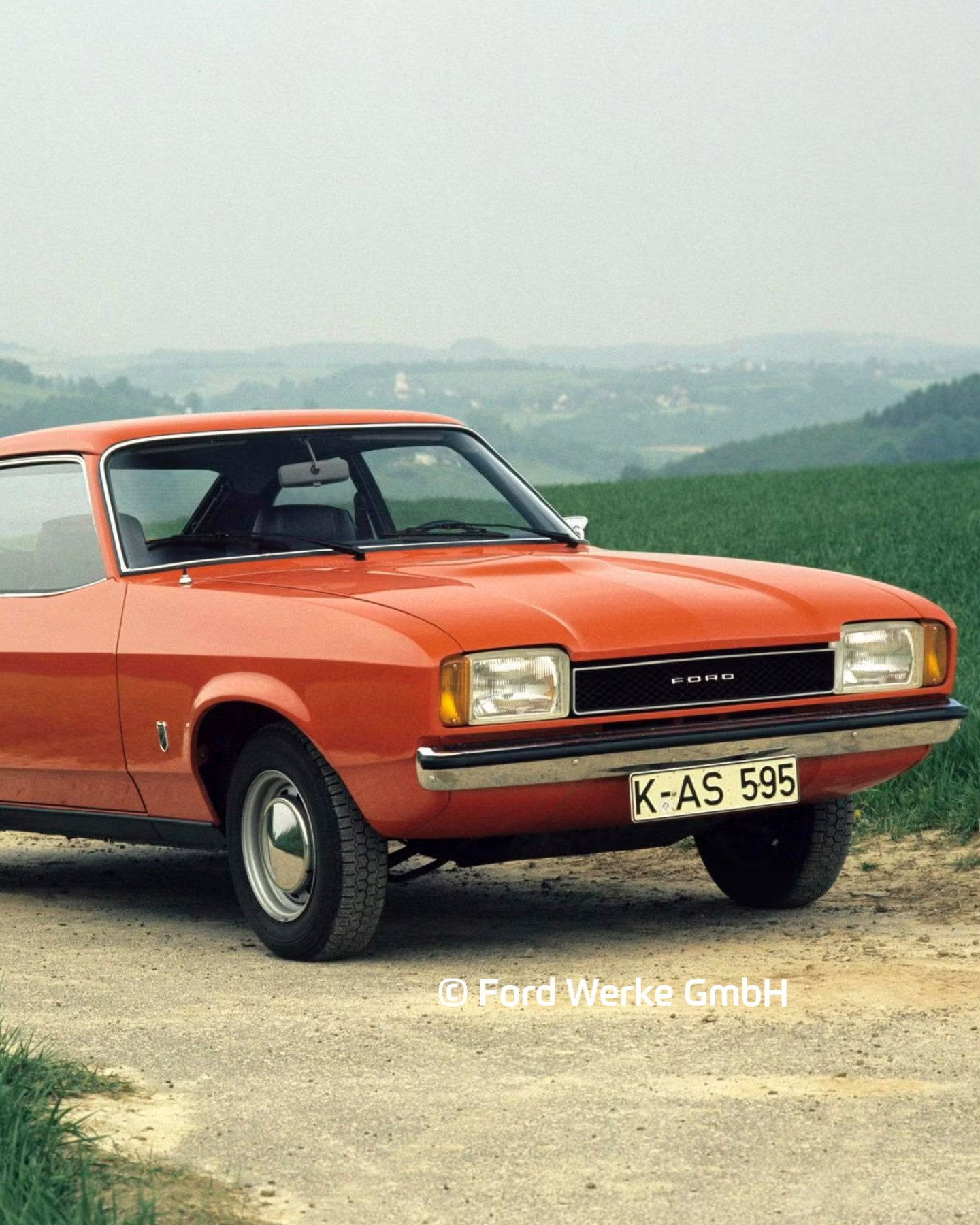

Ford Capri - The Blockbuster
In the late 1960s, Detroit Ford set out to create a car for young people. The result was one of the most popular cars: the Ford Capri, equipped with a five-speed transmission from ZF. Today, ZF produces spare parts so that the cult classic can live on.
The initiative came from Ford in Detroit: Ford's vision for a European car drew inspiration from the Mustang's success in North America, aiming to blend practicality with personal flair. The design philosophy centered on a sporty yet accessible vehicle that could comfortably accommodate four adults, offer a range of engine and parts for customization, and remain budget friendly.
This approach sought to capture the youthful spirit prevalent in Europe, where individual style and practical needs were not mutually exclusive but rather complementary in automotive design.
What is common today once had to be invented. In England and Germany, meticulous consideration was given to consumer preferences over the span of four years. The outcome was a world-renowned model =- a series featuring an impressive twelve engine variants, various equipment packages and additional customization options.

The Ford Capri as a sophisticated surprise package...
A Prototype generated Publicity
The Ford Capri made its debut as a prototype in 1968 stirring the media's curiosity. It was officially unveiled at the Brussels Motor Show in 1969 - and it was a smash hit. The Capri, originally dubbed the Colt and later changed due to a copyright conflict with Mitsubishi, had a simple sports-coupe style self-supporting body with individually suspended front wheels and a rigid axle guiding the rear wheels. This meant it could be offered at an extremely attractive price. Above all, it scored points for its Mustang-inspired design. The 2600 RS model, which was no longer quite so affordable, boasted 150 hp and sensational performance for the time. Ford's V6 2.6-liter engine proved to be a cornerstone for early sports cars, offering a blend of power and efficiency that led to many racing triumphs. A US version of the Capri was also built in Cologne and marketed to Americans as the "Capri imported by Lincoln-Mercury." It was so successful that it became a top-selling import vehicle, second only to the VW Beetle.
A sporty new five-speed transmission from ZF (S5-18/3) was on the scene soon after. Dubbed the Synchrona transmission, it was developed in 1968 for passenger cars and sports vehicles as a successor to the S4-18/3, which was mainly used in BMW vehicles. In the 1970s, most passenger cars were equipped with a four-speed transmission as standard, with the five-speed variant available as a popular upgrade. This option came, for example, as the S 5-18/3 from ZF. This transmission was available in countless versions for vehicles from almost all manufacturers.

The five-speed transmission S5-18/3 from ZF was also used in racing.
When it came to marketing, nothing was left to chance with the Capri. By saturating the media with catchy slogans, the campaign created a strong brand identity that resonated with consumers, ultimately resulting in overwhelming success. Approximately 1 million vehicles were sold in the first five years. The Ford Capri II launched in February 1974. It retained the essence of its predecessor’s design because, after all, they didn't want to depart from the successful formula. The two most striking distinguishing features were the tailgate and the larger wide-range headlights. The unique tailgate, which enabled individual rear seats that folded down, kept the Capri attractive for years to come. The third and final generation of the Capri was presented in March 1978.
The complete Wheel set is available for the Rally Versions
Today, the S 5-18/3 is more popular than ever, especially in England’s historic rallying scene. The rigorous nature of rallying results in significant wear and tear, and there is a need for spare parts. For this reason, ZF has started to manufacture shafts, wheels and synchronizer parts for the 2.3 to 1.0 gear ratio often used in rallying, which is offered as a complete repair kit. Shafts, wheels, synchronizer packs with sliding sleeves, bearings and sealing rings are available as replacement parts for Ford vehicles. Other transmission applications and parts can also be reproduced on request.
The Ford coupé, with its racing pedigree and and distinctive flat design, has become a canvas for automotive enthusiasts over the years.
Many Capris were tinkered with and tuned: Skirts were fitted, fender flares were made, rear blinds were installed and impressive wings were added. Few Capri models emerged from the eighties and nineties unchanged. Whether a slender 1300cc engine or a powerful V6 roared under the hood, it was typically considered irrelevant. The priority was creating a result that appeared fast. As a result, Capris were often passed over by reputable used car dealers, and many ultimately ended up on the scrap heap. In recent years, however, a growing number of enthusiasts have come to love the elegant coupé, and the Capri has become a beloved classic. However, out of almost 1.9 million Capri coupés sold, unmodified examples are now rare.

The Ford Capri RS with 150 hp is a much sought-after model today.












